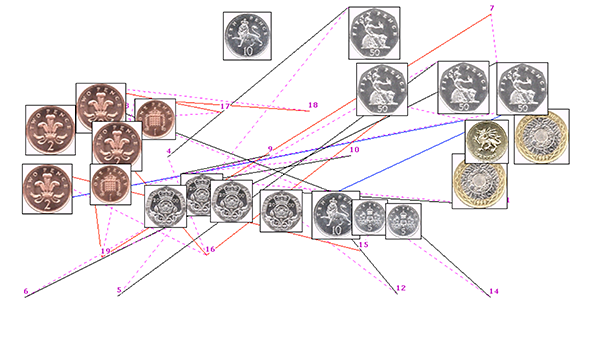Abstract: Does using our hands help us to add the value of a set of coins? We test the benefits and costs of direct interaction with a mental arithmetic task in a computerized yoked design in which groups of participants vary in their interactive mode (move vs. look) and the initial configuration of coins (pseudo-random vs. another mover’s final layout). By assessing performance and conducting a micro-genetic analysis of the strategies employed we argue that the purpose of movement is the result, rather than the process of moving. Participants move coins in order to sort, rather than to mark, and select them by value, rather than by location. They spontaneously create remarkably smart solutions, thereby incidentally creating physical configurations that can help other problem solvers.

Figure: Example of a stimulus configuration at the end of a trial.
Keywords: Embodied cognition, epistemic actions, complementary strategies, mental arithmetic, immediate interactive behavior (IIB).
Related: Addition as interactive problem solving | Thinking by doing? | Immediate interactive behavior (IIB) | Arabic vs. Roman arithmetic | Taxonomy of actions | The cognitive basis of arithmetic
Resources: Download PDF | Google Scholar
